1. Shin HY, Lee JY, Song J, Lee S, Lee J, Lim B, et al. Cause-of-death statistics in the Republic of Korea, 2014. J Korean Med Assoc. 2016; 59:221–232.

2. Jo JM, Hwang JH, Lee CH, Kang HJ, Yu JN. The need of cancer patients for rehabilitation services. J Korean Acad Rehabil Med. 2010; 34:691–700.
3. Okamura H. Importance of rehabilitation in cancer treatment and palliative medicine. Jpn J Clin Oncol. 2011; 41:733–738. PMID:
21622762.

4. Lipsett A, Barrett S, Haruna F, Mustian K, O'Donovan A. The impact of exercise during adjuvant radiotherapy for breast cancer on fatigue and quality of life: a systematic review and meta-analysis. Breast. 2017; 32:144–155. PMID:
28189100.

5. Carduff E, Kendall M, Murray SA. Living and dying with metastatic bowel cancer: serial in-depth interviews with patients. Eur J Cancer Care (Engl). 2017.

6. Dasch B, Kalies H, Feddersen B, Ruderer C, Hiddemann W, Bausewein C. Care of cancer patients at the end of life in a German university hospital: a retrospective observational study from 2014. PLoS One. 2017; 12:e0175124. PMID:
28384214.

7. Hartogh GD. Suffering and dying well: on the proper aim of palliative care. Med Health Care Philos. 2017; 20:413–424. PMID:
28374105.

8. Kanach FA, Brown LM, Campbell RR. The role of rehabilitation in palliative care services. Am J Phys Med Rehabil. 2014; 93:342–345. PMID:
24196973.

9. McIlfatrick S, Connolly M, Collins R, Murphy T, Johnston B, Larkin P. Evaluating a dignity care intervention for palliative care in the community setting: community nurses' perspectives. J Clin Nurs. 2017; 26:4300–4312. PMID:
28178386.

10. Eyigor S, Akdeniz S. Is exercise ignored in palliative cancer patients? World J Clin Oncol. 2014; 5:554–559. PMID:
25114869.

11. Talbot Rice H, Malcolm L, Norman K, Jones A, Lee K, Preston G, et al. An evaluation of the St Christopher's Hospice rehabilitation gym circuits classes: patient uptake, outcomes, and feedback. Prog Palliat Care. 2014; 22:319–325. PMID:
25414550.

12. Gerber LH. Cancer rehabilitation into the future. Cancer. 2001; 92(4 Suppl):975–979. PMID:
11519023.

13. Oken MM, Creech RH, Tormey DC, Horton J, Davis TE, McFadden ET, et al. Toxicity and response criteria of the Eastern Cooperative Oncology Group. Am J Clin Oncol. 1982; 5:649–655. PMID:
7165009.

14. Karnofsky DA, Abelmann WH, Craver LF, Burchenal JH. The use of the nitrogen mustards in the palliative treatment of carcinoma: with particular reference to bronchogenic carcinoma. Cancer. 1948; 1:634–656.
15. Holden MK, Gill KM, Magliozzi MR, Nathan J, Piehl-Baker L. Clinical gait assessment in the neurologically impaired. Reliability and meaningfulness. Phys Ther. 1984; 64:35–40. PMID:
6691052.
16. DeLisa JA. A history of cancer rehabilitation. Cancer. 2001; 92(4 Suppl):970–974. PMID:
11519022.

17. Cheville A. Rehabilitation of patients with advanced cancer. Cancer. 2001; 92(4 Suppl):1039–1048. PMID:
11519031.

18. Jung HY. Impact and application of the internal classification functioning, disability and health in the medical rehabilitation. J Korean Acad Rehabil Med. 2004; 28:401–411.
19. Abrahm JL, Banffy MB, Harris MB. Spinal cord compression in patients with advanced metastatic cancer: “all I care about is walking and living my life”. JAMA. 2008; 299:937–946. PMID:
18314436.
20. Stubblefield MD, Keole N. Upper body pain and functional disorders in patients with breast cancer. PM R. 2014; 6:170–183. PMID:
24360839.

21. Stubblefield MD, Custodio CM. Upper-extremity pain disorders in breast cancer. Arch Phys Med Rehabil. 2006; 87(3 Suppl 1):S96–S99. PMID:
16500198.

22. Gheita TA, Ezzat Y, Sayed S, El-Mardenly G, Hammam W. Musculoskeletal manifestations in patients with malignant disease. Clin Rheumatol. 2010; 29:181–188. PMID:
19898774.

23. Yang EJ, Chung SH, Jeon JY, Seo KS, Shin HI, Hwang JH, et al. current practice and barriers in cancer rehabilitation: perspectives of Korean physiatrists. Cancer Res Treat. 2015; 47:370–378. PMID:
25672583.

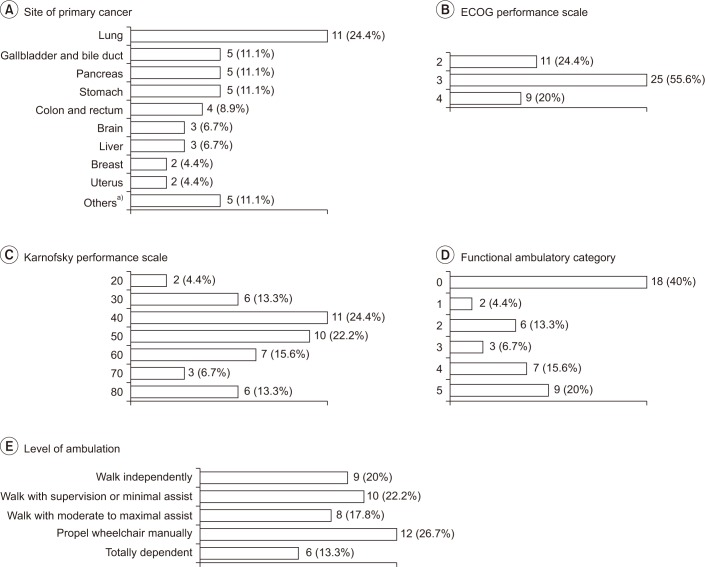

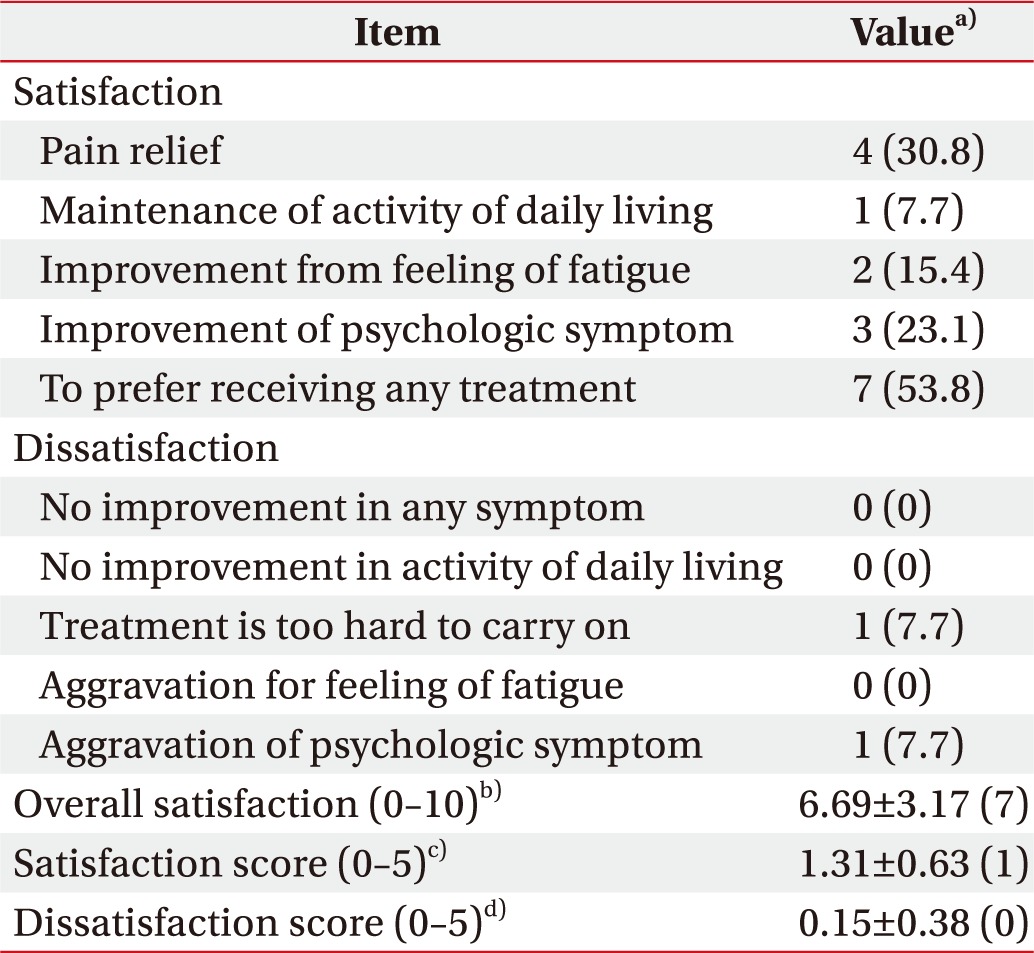





 PDF
PDF ePub
ePub Citation
Citation Print
Print



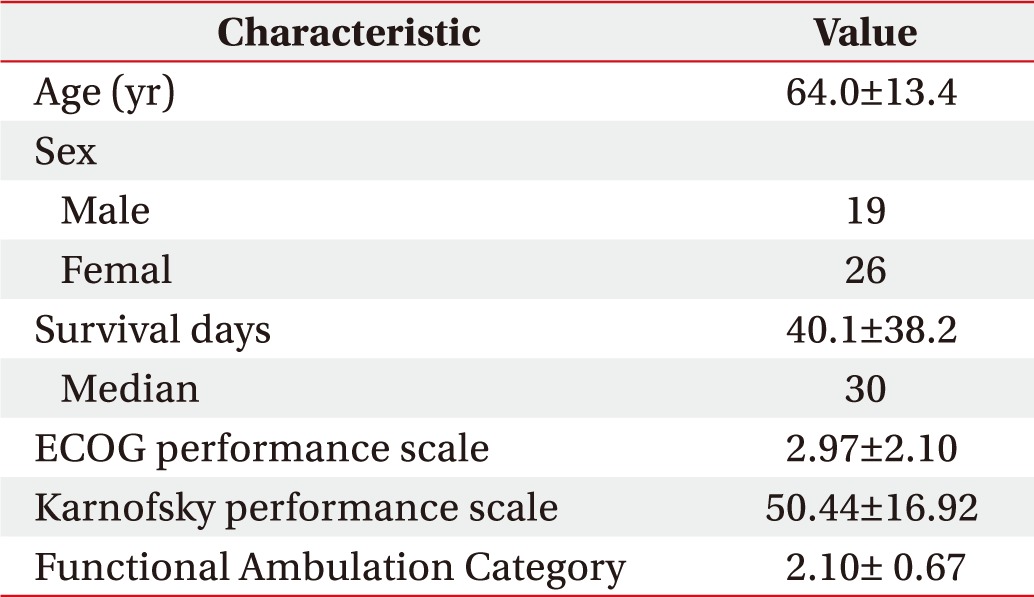
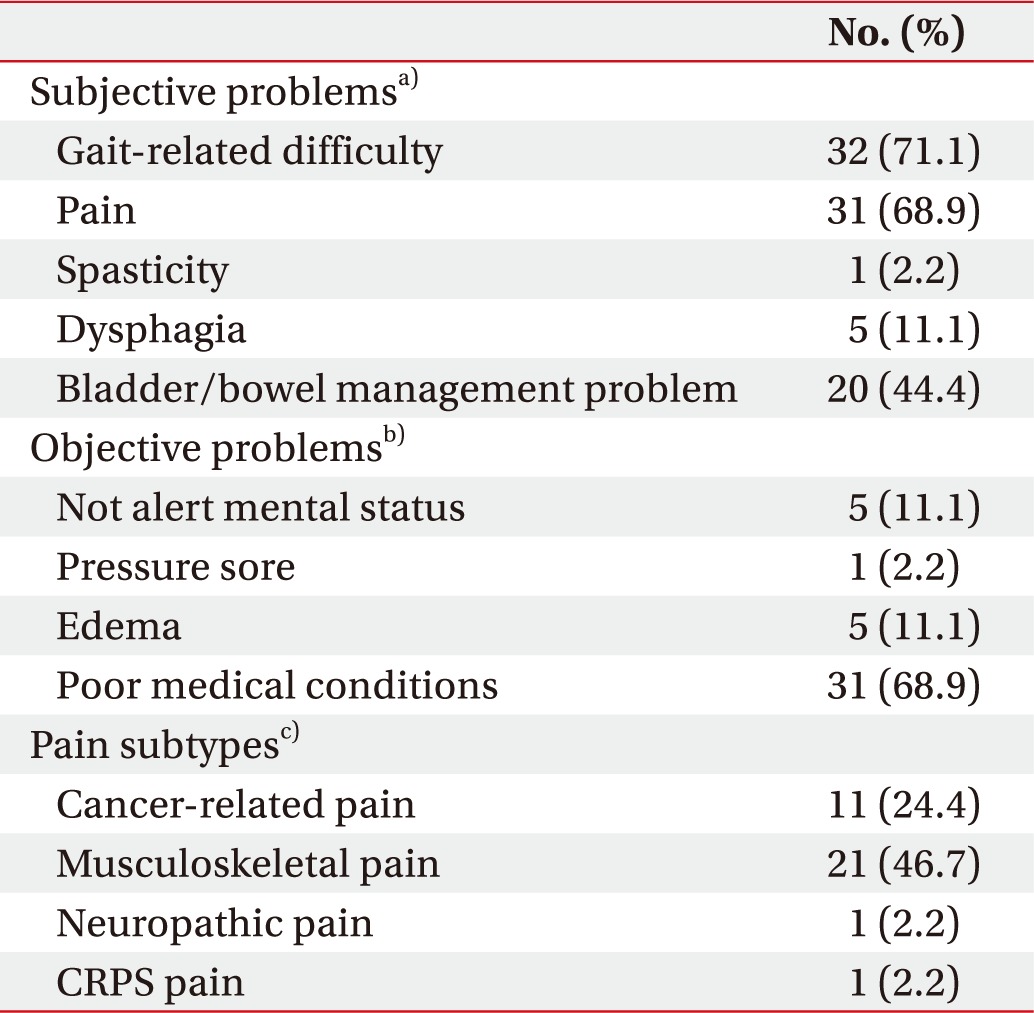
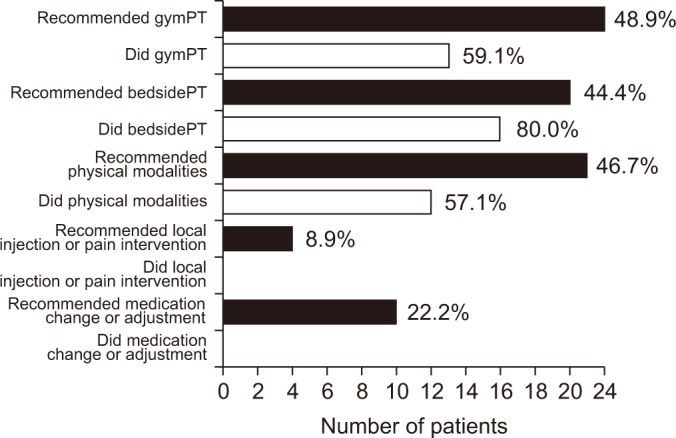
 XML Download
XML Download